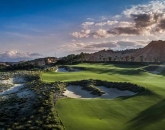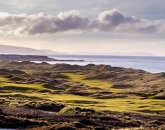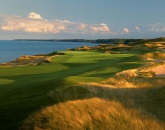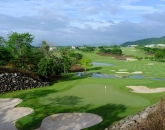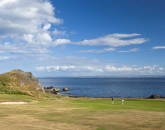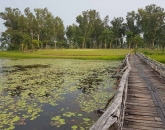
The choice of grass for a new (or renovated) golf course is one of the most important decisions on any project. The cost to maintain this grass will run into millions of dollars over the years as green-keeping staff look to create play conditions that please the golfer, owner and architect - and not always in that order.
In Hong Kong and South East Asia warm season grass dominate the play areas. These grasses are typically able to withstand high temperatures and large volumes of precipitation. The most popular grasses include: Manila grass (Zoysia matrella) Bermuda grass (Cynodon spp.) and Seashore Paspalum (Paspalum vaginatum)
I have had the good fortune to travel extensively throughout Southeast Asia these past few years, which has afforded me the opportunity to visit many golf courses as well as the chance to speak directly, and in detail, with those involved in golf course maintenance and upkeep. When it comes to grass selection (and the maintenance thereof) there are very few people more informed than the golf course superintendent. I personally enjoy listening and absorbing what these qualified individuals have to say about grass and maintenance. After all, this is their bread and butter and they know their conditions better than anyone.
In fact if the choice of grass, on any new project, was left to a ‘local’ golf superintendent then I am willing to bet that the choice would be the most responsible one most of the time – maybe even all the time.
What may surprise you is that some of the superintendents (and this number is bigger than you think) have to manage a grass type that may not altogether be best suited to the situation. It’s not that any one of the warm-season grasses won’t grow in the region; it’s more about the maintenance cost differential between each one of these grass types. Let me explain in a little more detail.
I have seen more golf courses in Asia with Bermuda grass than any of the other type. Bermuda grass is more than adequate as a playing surface but frequent mowing and large amounts of fertilizer are required to keep it in satisfactory condition. To go further, Bermuda grass is a non-native grass and so is susceptible to invasion from native grasses. It’s a high maintenance grass but establishes quickly and this I can’t help but think is the main reason why it’s so popular with architects and owners alike.
Pages
Click here to see the published article.


